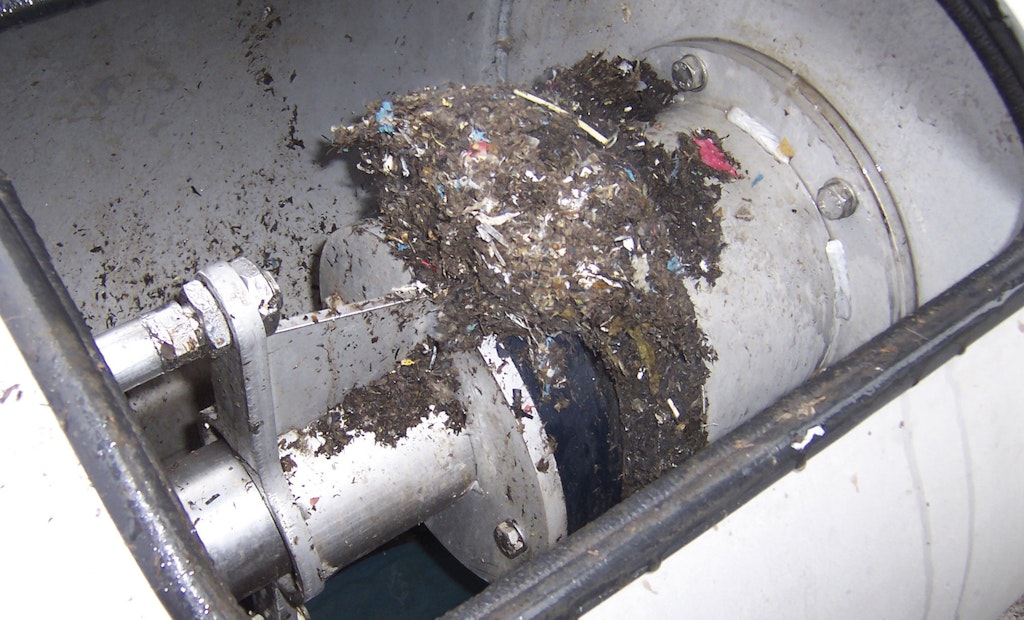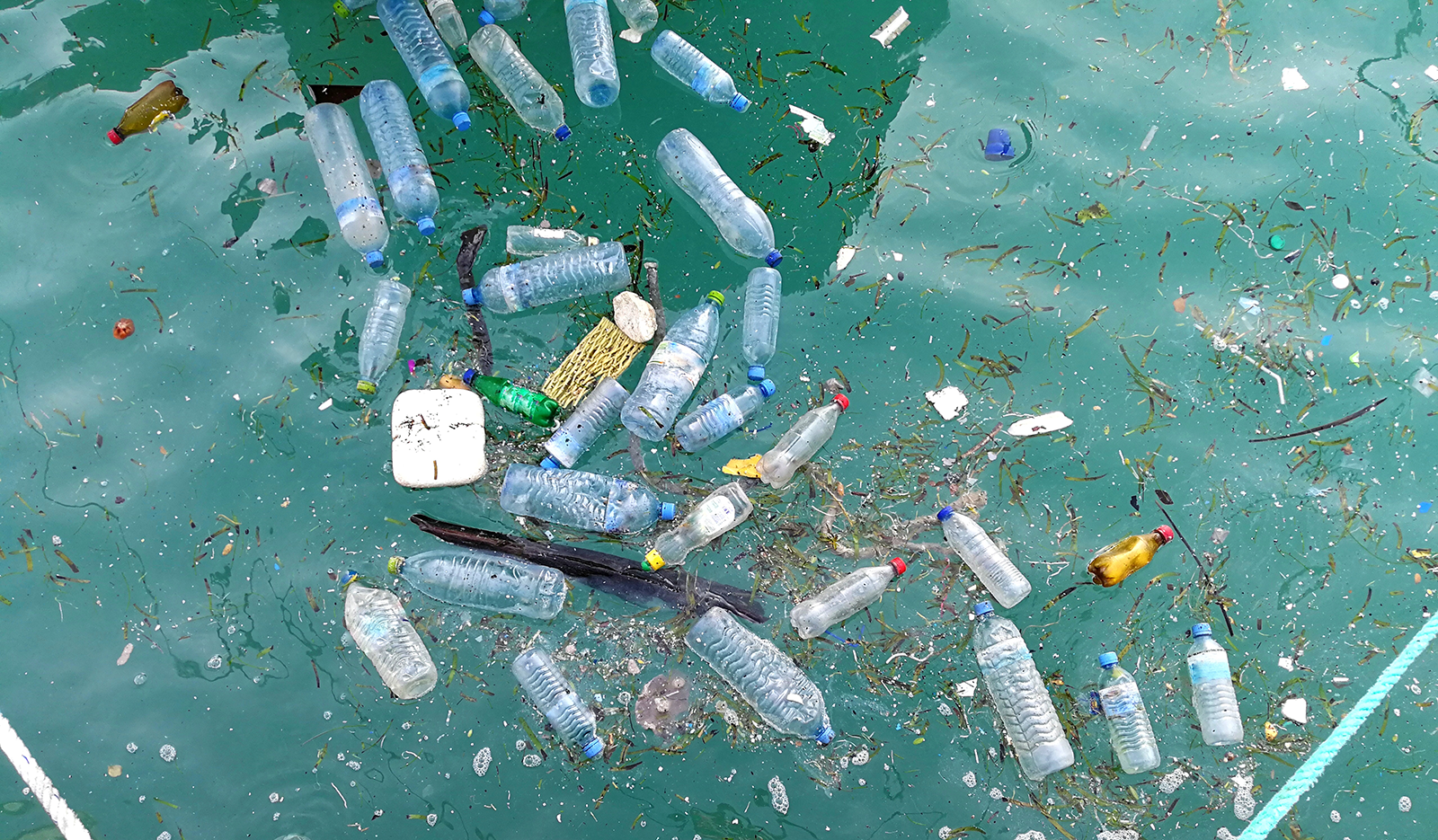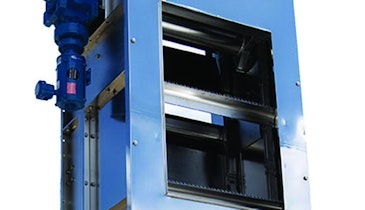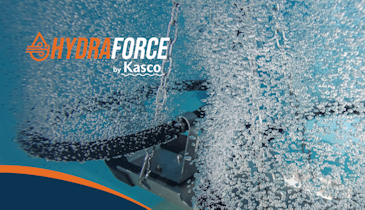Interested in Dewatering/Biosolids?
Get Dewatering/Biosolids articles, news and videos right in your inbox! Sign up now.
Dewatering/Biosolids + Get AlertsBy now you have probably read or heard stories of the huge floating islands of plastic out in the ocean. Some reports suggest these trash islands rival the state of Texas in square mileage.
But while the Texas comparison is somewhat of an exaggeration, there is a very real issue with plastics in the marine environment. Back in 1999 Captain Charles Moore is credited as the researcher who first started taking measurements in the North Pacific Gyre, which later became known as the Great Garbage Patch. While “Garbage Patch” sounds very much like rafts of visible, floating plastic trash, the reality is that much of the Pacific Gyre is polluted by microplastics, tiny floating pieces of plastic that would be indiscernible individually but which together turn the ocean into a hazy soup of shards and fibers.
It all flows downstream
The causes of the Garbage Patch have been debated since its discovery. Initial observations pointed towards debris associated with fishing and aquaculture activities as well as developing nations' usage of waterways to convey garbage as being major contributors to the problem. While these are significant contributors to the makeup of the plastics invading the environment, they only tell part of the story.
With increased focus on working to understand the makeup and sources of the plastic debris in the ocean, researchers discovered that they had to look to inland waterways in developed nations as a major conduit for the source of microplastics entering the ocean environment. Recent studies have looked at rivers to understand what is possibly being transported.
In many industrialized nations, major strides in capturing macro-sized plastics through proper techniques of disposal and recycling is becoming increasingly effective. The presence of microplastics (<5 mm) and nanoplastics (<0.2 mm), however, are more pervasive in the waterways and soils.
The plastic buck can be stopped here
Of course, you know that if we are looking at rivers then the trail leads right to the outfall of a wastewater treatment plant. Some interesting research looked at six WWTPs in the U.K. for presence of microplastics. Researchers found a significant increase in the presence of microplastics downstream as compared to upstream. Within the collected sludge samples they found a high concentration proportionately of fibers, fragments and flakes.
In this study they identified the highest proportions of microplastics attributed to fibers associated with the breakdown of textiles. As indicated in studies conducted in North America, the combinations of fibers, beads or fragments in wastewater varies depending on what activities are occurring within the sewer collections network and what nearby industries are supported.
Interestingly, although WWTPs are identified as sources of microplastic waste, this also presents a powerful opportunity to intercept and capture the microplastics before they are sent out further into the environment.
Putting all the processes to work
To intercept microplastics, certain current practices may need to be reconsidered. The use of grinders is quite common in the sewer collections system and within the WWTP itself. While the grinding of material to a smaller size may solve the immediate problem of pump clogging, breaking up the plastic material contributes to the creation of smaller plastic fragments. It would be more effective to simply remove the debris from the flow rather than grind it to prevent the creation of plastic fragments.
A study in Glasgow looked at the different points of treatment and examined the removal rate at key points in the process within conventional WWTP primary and secondary configurations. In its conclusion researchers identified appreciable removal of microplastics from the liquid fraction within the grit and grease removal and primary settlement (a reported 78.34% of the microplastics from the liquid fraction). Research in Southern California in 2016 reinforced the Glasgow work. The study’s conclusion indicates: “Microplastic particles were found to be removed mainly in the primary treatment zones via solids skimming and sludge settling processes.”
A Finnish researcher in 2017 made the point that although primary and secondary treatment showed a high removal rate from the liquid fraction of the WWTP, a significant quantity of microplastics was being discharged to the receiving waterbody due to the sheer volume of effluent released. The focus of the study examined advanced forms of final tertiary treatment technologies. In particular it looked at microplastics removal after secondary treatment of rapid sand filtration, cloth disk filters, dissolved air flotation, and after primary treatment for the membrane bioreactor.
While all four technologies tested at greater than 95% (DAF: 95%; RSF: 97%; DF: 98.5%; MBR: 99.9%), the MBR technology provided the lowest concentration of microplastics in the final liquid discharge to the receiving stream.
Sludge is doing the heavy lifting
In that Finnish study it was noted that 99% of microplastics exited the flow stream into the raw sludge extracted from the different processes. A 2016 study published in Environmental Science & Technology examines the fate of microplastics after several forms of sludge treatment (anaerobic digestion, thermal drying and lime stabilization). In that research it showed that anaerobic digestion demonstrated the highest reduction rate of microplastics. However, there still remained a significant portion of microplastics in the biosolids output of the digestion process.
By using existing techniques of digestion, dewatering and thermal drying, actual volumes of the biosolids can be appreciably reduced. It is also possible to reduce the macroplastic (>5 mm) loading into the plant by improving headworks using fine screens, high performance grit capture, grit washing, and screening of the sludge.
Where do we go from here?
The EPA issued a report in November 2018 identifying that it lacked the resources to understand and provide research and regulation to safeguard biosolids from emerging contaminants (such as microplastics) slated for land application. The report makes the statement that: “In the face of data gaps, a lack of risk assessment tools, and uncertainty regarding the safety of biosolids, the EPA is not providing clear and complete information to the public. Concerned citizens are questioning the safety of biosolids, particularly for agricultural land, and some municipalities voted on local ordinances restricting biosolids altogether.”
With the increasing momentum of WWTPs systematically transforming into resource recovery facilities, greater emphasis is being placed on energy harvesting and electrical generation. Sludge is already being used to produce biogas to drive electrical generators to offset energy expenditures within the plant itself. In some cases, a surplus of energy is returned to the grid. Dried biosolids also provide an additional source of energy as a fuel with the thermal equivalent of brown coal. This allows an additional avenue for harvesting energy potential from the sludge through emerging techniques known as sludge-to-energy.
Gasification and pyrolysis technologies are showing promise as a potential for converting plastic waste into energy. A study in 2016 by Marquette University demonstrated the viability of pyrolysis to be effectively used on dried wastewater sludge. This opens up the possibility through controlled combustion to mitigate for microplastic contamination and potentially produce a better biosolid product for land application. There is need for further research on this consideration.
As professionals in the wastewater industry, WWTP operators offer a tremendous resource to offset the flow of microplastics to the oceans. As citizens we can advocate for proper research and regulation. As consumers we can make buying choices that will influence plastic’s trajectory. As individuals we can work to be more mindful of the flow of plastics through our hands.
Visit the HUBER Technology, Inc. Storefront







